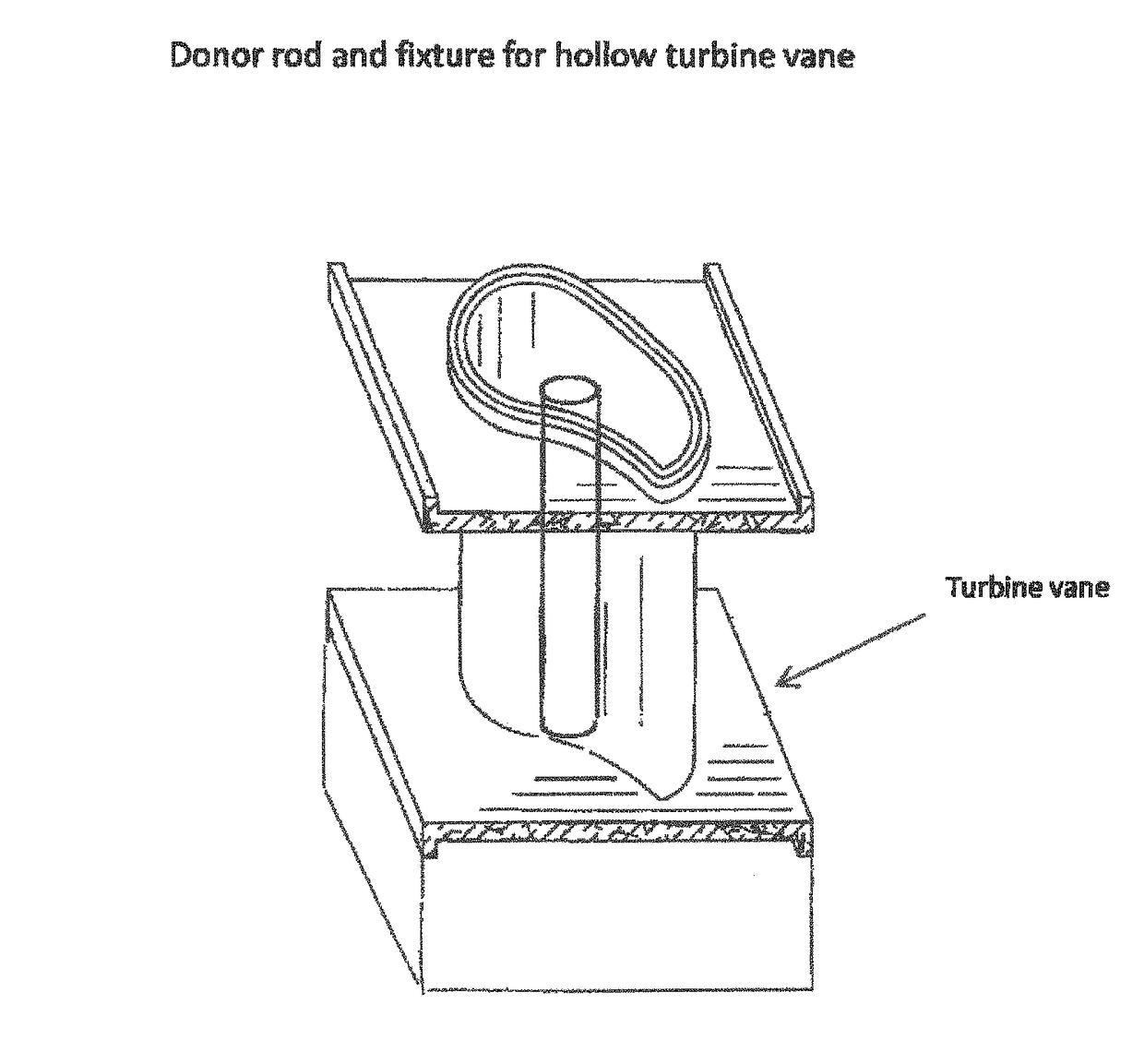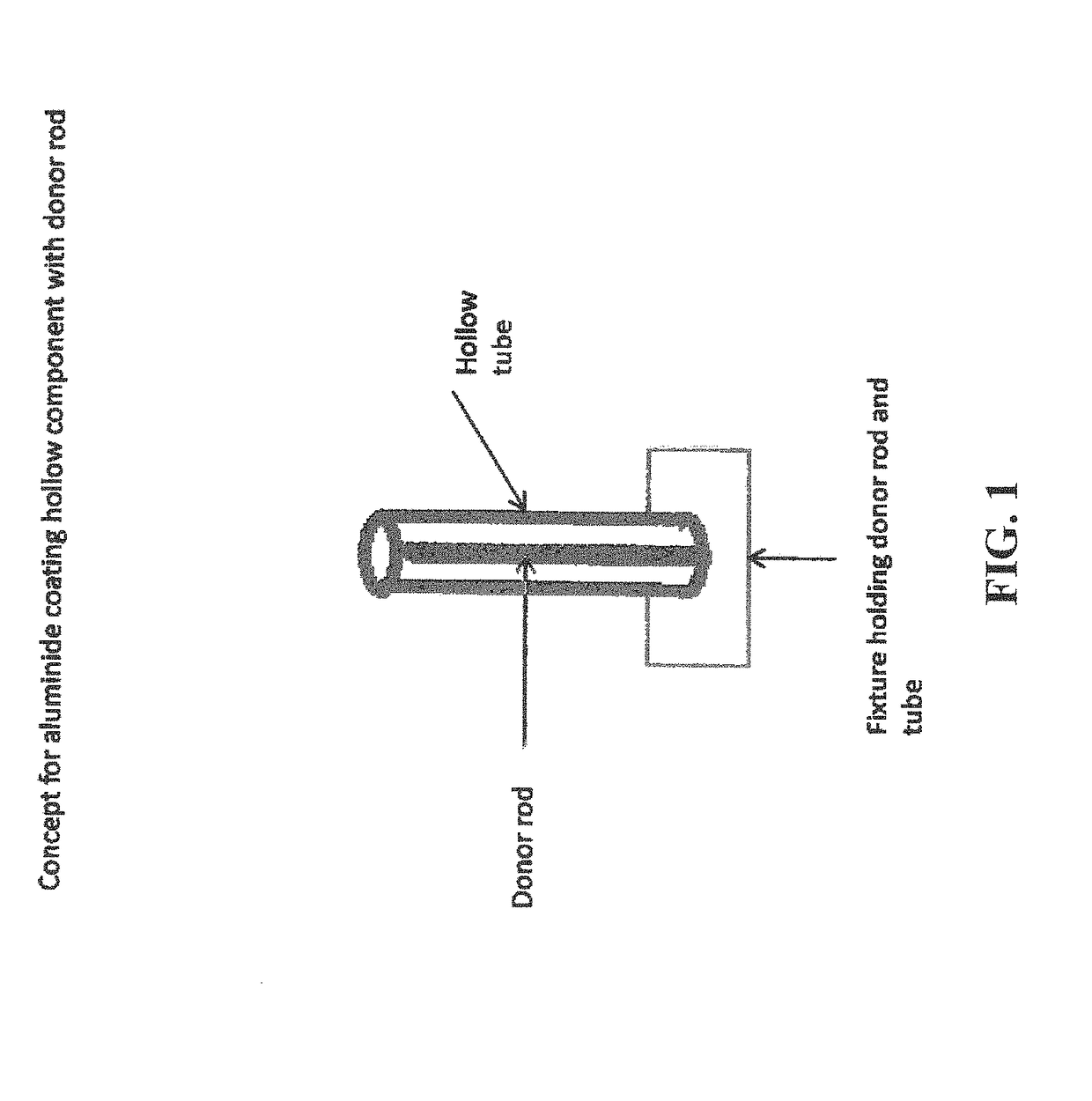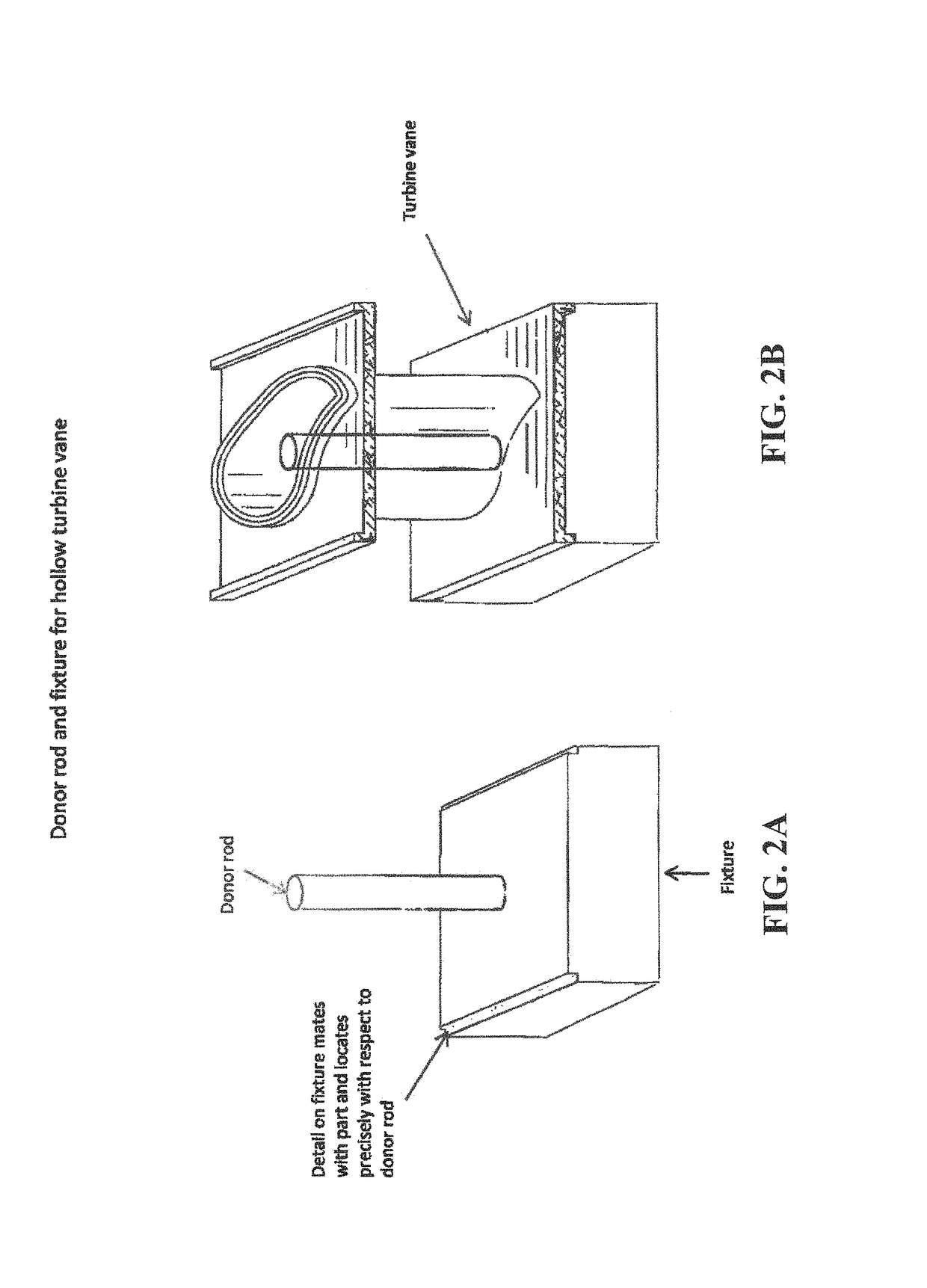Method and apparatus for producing diffusion aluminide coatings
a technology of diffusion aluminide and coating, which is applied in the direction of solid-state diffusion coating, vacuum evaporation coating, coating, etc., can solve the problems of fatigue cracking, metal wastage and wall thickness loss, and part failur
- Summary
- Abstract
- Description
- Claims
- Application Information
AI Technical Summary
Benefits of technology
Problems solved by technology
Method used
Image
Examples
example 1 (
Indirect Slurry Rod Method for Coating Hollow Tubes)
[0048]Tests were performed to apply an aluminide coating onto the internal surfaces of a hollow cylindrical tube. The tube was identical to the one coated in Comparative Example 1. A representative schematic of the tube is shown in FIG. 1. The tube was formed from grade 304 stainless steel. The tube was 48 inches in length and had a diameter of 2 inches.
[0049]A cylindrical shaped elongated member of grade 304 stainless steel was coated with SermAlcote™ 2525 slurry aluminide. The member was dipped into the slurry to produce a film thickness of approximately 0.01 inches. The member was cured at 250° F. for 1 hour. The coated member was placed inside the hollow tube and positioned so as to not contact the walls of the tube. A heat-resistant metal fixture was configured at each end of the tube to maintain the tube in a fixed position during the coating cycle.
[0050]The coating assembly was then introduced into a bell retort furnace. The...
example 2 (
Indirect Slurry Rod Method for Coating Turbine Vane)
[0053]Two trials were performed to apply an aluminide coating onto the internal surfaces of a gas turbine vane having a geometry identical to that of Comparative Example 2. The coating material was SermAlcote™ 2525 aluminide.
[0054]A stainless steel wire was coated with SermAlcote™ 2525 slurry aluminide. The wire had a diameter of 0.125 inches. The wire was dipped into the slurry to produce a film thickness of approximately 0.01 inches. The wire was cured at 250° F. for 1 hour. Next, the turbine vane was placed over the rod. A heat-resistant graphite fixture was configured to maintain the tube in a fixed position during the coating cycle. The coated wire was positioned so as to not contact the walls of the vane.
[0055]The coating assembly was then introduced into a bell retort furnace. The coating and hollow tube were heat treated in the bell retort furnace for 1975° F. for 6 hours in an argon atmosphere. Aluminum vaporized from the ...
PUM
| Property | Measurement | Unit |
|---|---|---|
| temperatures | aaaaa | aaaaa |
| temperature | aaaaa | aaaaa |
| temperature | aaaaa | aaaaa |
Abstract
Description
Claims
Application Information
 Login to View More
Login to View More - R&D
- Intellectual Property
- Life Sciences
- Materials
- Tech Scout
- Unparalleled Data Quality
- Higher Quality Content
- 60% Fewer Hallucinations
Browse by: Latest US Patents, China's latest patents, Technical Efficacy Thesaurus, Application Domain, Technology Topic, Popular Technical Reports.
© 2025 PatSnap. All rights reserved.Legal|Privacy policy|Modern Slavery Act Transparency Statement|Sitemap|About US| Contact US: help@patsnap.com



